You know that feeling when a story gets under your skin and won’t leave? According to Board Game Quest, dark stories have become increasingly popular as interactive entertainment, with players spending hours trying to solve mysterious deaths and gruesome scenarios through creative questioning. That’s exactly what happened to me with Edgar Allan Poe’s “The Tell-Tale Heart” back in high school. I couldn’t sleep for days afterward, lying there thinking about that narrator hearing the dead man’s heart beating under the floorboards. It was just words on a page, but somehow Poe managed to crawl inside my head and set up camp.

Here’s the thing about dark stories – the really good ones don’t just scare you in the moment and then leave you alone. They stick around, making you think twice about walking down dark hallways or questioning things you used to take for granted. Whether you’re a writer trying to craft your own spine-chilling narratives or just someone who gets a weird kick out of being terrified by fiction, understanding what separates the stories that haunt you from the ones you forget by next week is pretty important.
If you’re curious about the psychology behind why certain scary stories mess with our heads so effectively, there’s some fascinating brain science behind effective storytelling that explains how these narratives create lasting impact.
What You’ll Find Here
-
What to Look For in Dark Stories
-
Stories That Mess With Your Head (Psychological Horror)
-
The Classics That Started It All (Gothic Horror)
-
Dark Stories That Make You Think About Society
-
Body Horror (Fair Warning: It Gets Gross)
-
Cosmic Horror That Makes You Feel Small
-
Modern Dark Stories for Current Fears
-
How to Tell Good Dark Stories from Cheap Thrills
-
Creating Your Own Dark Stories with AI Help
-
Final Thoughts
The Quick Version
Look, I get it – this is a long list. Here’s what I’ve learned after years of reading stories that kept me up at night:
-
The best dark stories aren’t just trying to gross you out – they’re exploring real fears and anxieties that we all have
-
Psychological horror usually messes with you more than gore because it targets the stuff that actually scares us in real life
-
Modern dark fiction is tackling things like climate anxiety and social media addiction, which honestly makes it even more unsettling
-
Good dark stories have incredible writing – they’re not just relying on shock value to do the heavy lifting
-
The stories that stick with you are usually the ones that feel like they could actually happen, or at least reflect something true about being human
-
Body horror taps into our fear of losing control over ourselves, which is basically everyone’s nightmare
-
Cosmic horror makes you feel insignificant in the universe, and somehow that’s terrifying in the best way possible
What to Look For in Dark Stories
Here’s what I’ve noticed separates the stories that stick with you from the ones you forget by next week. The really good dark stories aren’t just throwing disturbing images at you and hoping something sticks. They’re digging into stuff that actually scares people – death, loneliness, losing control, the dark side of human nature. And they’re doing it with incredible writing that builds atmosphere so thick you could cut it with a knife.
Stories That Feel Real (Even When They’re Not)
The best dark stories feel authentic because they’re based on real psychological truths. Ever notice how the scariest stories are often the ones that could theoretically happen? Or at least feel like they’re exploring something true about what it means to be human? That’s not an accident.
Take any story that’s genuinely haunted you. I bet it wasn’t scary because of what it showed you – it was scary because of what it made you think about. The author probably took their own anxieties or observations about the world and turned them into fiction. When you’re reading, ask yourself: Is this story trying to tell me something true about life, or is it just trying to shock me?
For writers who want to understand how to weave complex meanings into their stories, these powerful story theme examples show how master storytellers do it.
Here’s a rough breakdown of how deep different stories go:
Surface-Level Scary: Relies on gore and jump scares, doesn’t really mean anything deeper, you forget it pretty quickly. Think generic slasher stuff.
Pretty Good: Explores specific fears or social issues, has some character development, makes you think for a few days. Like “The Monkey’s Paw” or “The Fly.”
The Really Good Stuff: Makes you question your assumptions about life, has multiple layers you can interpret different ways, sticks with you for months or years. “The Lottery” and “The Ones Who Walk Away from Omelas” are perfect examples.
What Makes These Stories Work So Well
Superior dark stories are masterclasses in storytelling. The atmosphere is so carefully built that you can feel the tension rising with every sentence. They know that what you don’t show can be way more terrifying than what you do – your imagination is usually worse than anything an author could describe.
Character development is crucial because you need someone to care about, even when everything’s going to hell. The best dark stories give you complex people facing real internal and external conflicts. That makes the horror personal instead of just abstract.
Think about how Shirley Jackson builds atmosphere in “The Lottery.” She starts with this beautiful summer day and cheerful townspeople. Then she gradually drops in these unsettling details – the pile of stones, nervous laughter, people being reluctant to participate. By the time you realize what’s happening, you’re trapped in the same social pressure as the characters. Jackson never actually describes the violence, but the story creates lasting horror through implication and social commentary.
Why These Stories Get Under Your Skin
The stories that really mess with you create emotional responses that last way beyond the reading experience. They do this through sustained tension (not cheap jump scares), emotional connections that hit you on a deeper level, and imagery that camps out in your brain long after you’ve finished reading.
The psychological impact usually comes from making you question things you thought you knew about safety, morality, or reality itself. The best dark stories plant these little seeds of unease that keep growing in your mind, making you look at everyday situations differently.
It’s like when you watch a horror movie and can’t sleep afterward, except these stories do it with just words.
Stories That Mess With Your Head
Psychological horror is probably the most sophisticated type of dark storytelling out there. Instead of relying on monsters or gore, these scary stories focus on mental deterioration, paranoia, and how fragile our grip on reality really is. They’re terrifying because they target psychological vulnerabilities we all have and make us question whether we can trust our own minds.
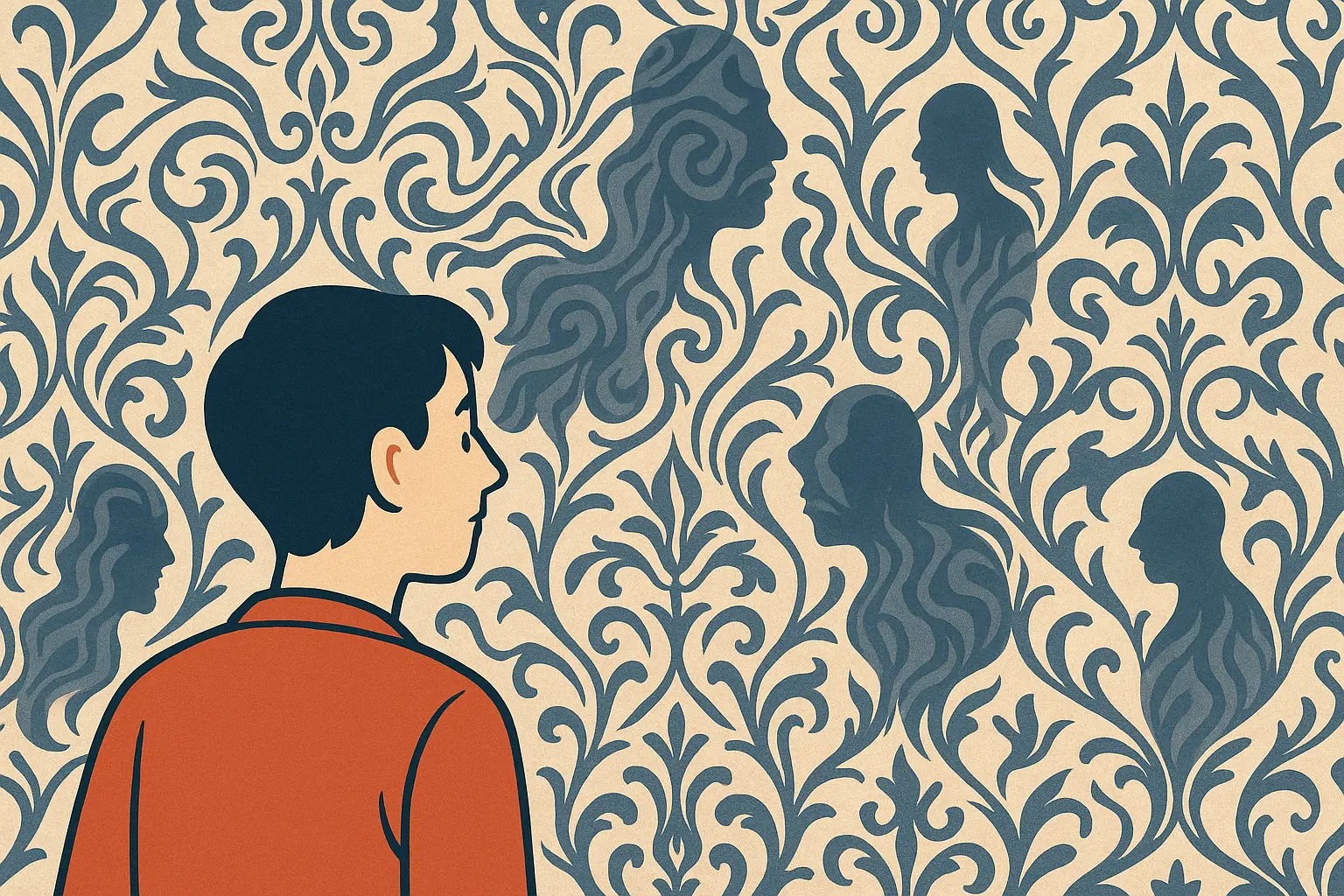
1. “The Yellow Wallpaper” by Charlotte Perkins Gilman
A new mom is basically locked in a room by her doctor husband for a “rest cure,” and watching her slowly lose it is absolutely heartbreaking and terrifying. Gilman documents a psychological breakdown while simultaneously calling out 19th-century medical treatment of women, which was often just medical gaslighting.
The wallpaper becomes this living thing in her mind – first annoying, then menacing, finally alive with trapped figures that mirror her own imprisonment. It works on multiple levels: feminist commentary about how dismissing women’s concerns leads to tragedy, Gothic horror where the environment becomes threatening, and a psychological study of what happens when someone’s agency is completely stripped away.
2. “The Tell-Tale Heart” by Edgar Allan Poe
This is the story that got me started on dark fiction. The narrator kills an old man because of his “vulture eye,” then becomes convinced he can hear the victim’s heart beating beneath the floorboards. The genius is in how Poe shows guilt manifesting physically – the symptoms feel completely real to the person experiencing them.
The unreliable narrator forces you to question everything while experiencing the protagonist’s paranoia firsthand. Poe demonstrates how your own mind can become your worst enemy, creating torments more effective than any external threat.
3. “We Have Always Lived in the Castle” by Shirley Jackson
Jackson creates this atmosphere of mounting dread around the isolated Blackwood family and their dark secrets. The story explores family dysfunction, social ostracism, and how people create their own prisons. The narrator’s childlike voice contrasts sharply with the disturbing events she describes, which creates this cognitive dissonance that makes everything feel wrong.
The real horror emerges gradually as you piece together the family’s history and realize just how dysfunctional they are. Jackson’s genius is making the abnormal seem almost reasonable through the narrator’s perspective, which forces you to question your own moral judgments.
4. “The Babadook” Concept by Jennifer Kent
This modern psychological horror uses a supernatural monster to represent grief and unprocessed trauma. A widowed mother and her troubled son are terrorized by the Babadook, but the real monster is the mother’s inability to process her husband’s death and her conflicted feelings about motherhood.
It’s particularly effective because it grounds supernatural horror in genuine psychological truth – the way grief and trauma can literally consume us if we don’t deal with them. The story examines how unprocessed emotions can become monstrous, taking on lives of their own.
5. “Black Mirror: San Junipero” by Charlie Brooker
While this episode seems optimistic on the surface, it has these disturbing undertones about consciousness, mortality, and what makes experiences “real.” Set in a digital afterlife where consciousness can be uploaded and preserved, it raises questions about whether artificial experiences can replace genuine ones.
The psychological horror comes from implications rather than explicit content – the possibility that our digital selves might not be “real,” that immortality might become a prison, and that technology might offer solutions that solve the wrong problems entirely.
The Classics That Started It All
Gothic and supernatural horror stories blend otherworldly elements with psychological depth, using ghosts, curses, and mysterious phenomena to explore guilt, family dysfunction, and moral decay. These narratives excel at creating atmospheric dread while examining how the past haunts the present and how ordinary people can become complicit in extraordinary evil.
6. “The Turn of the Screw” by Henry James
James creates this masterpiece where a governess encounters ghostly apparitions at a remote estate, but the real terror is in the uncertainty – are the ghosts real, or is she having a mental breakdown? This ambiguity forces you to become an active participant in determining what’s actually happening.
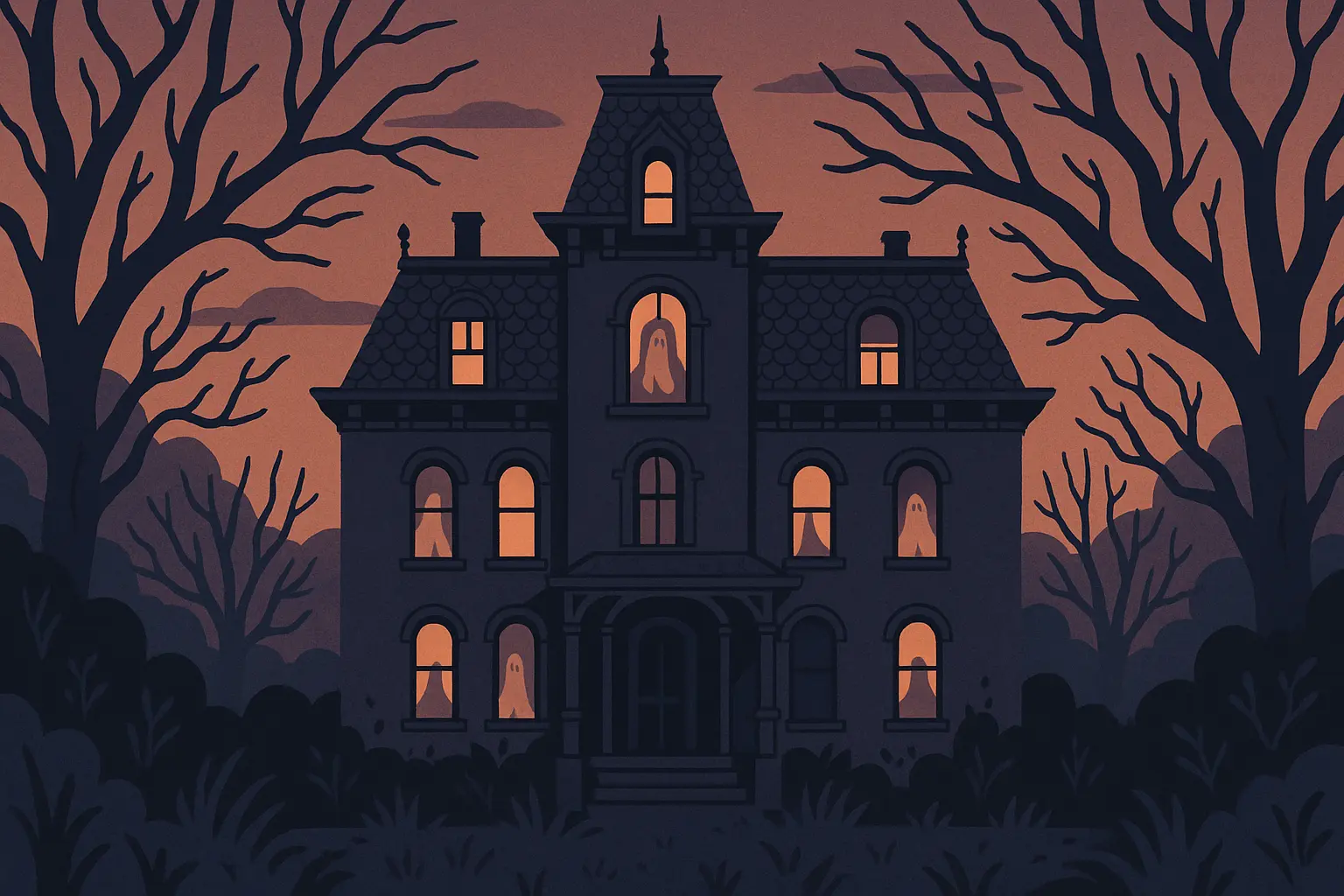
The story works on multiple levels: as a traditional ghost story, as a psychological study of an unreliable narrator, and as social commentary on Victorian repression and class dynamics. James shows how the most effective supernatural horror often leaves more questions than answers.
7. “The Lottery” by Shirley Jackson
This is Jackson’s devastating critique of how people go along with horrible things just because “that’s how we’ve always done it.” A seemingly normal village maintains a brutal annual tradition, and the story’s power comes from its matter-of-fact presentation of extraordinary evil.
The supernatural element is minimal – just the lottery ritual itself – but the horror is profound. Jackson exposes how civilized societies can harbor barbaric practices and how individual moral responsibility gets lost in group dynamics. Fair warning: this story will ruin your day in the best possible way.
8. “The Monkey’s Paw” by W.W. Jacobs
This classic “be careful what you wish for” tale demonstrates the power of keeping things simple. Three wishes with increasingly horrific consequences create perfect story structure: first wish for money results in their son’s death (compensation payment), second brings him back as something horrible, third sends him away again.
The story’s effectiveness lies in restraint and implication rather than explicit description. Jacobs understands that your imagination will create more disturbing images than any author could describe, making the unseen horror more powerful than graphic detail.
9. “The House of Usher” by Edgar Allan Poe
Poe’s Gothic masterpiece explores the decay of an aristocratic family through the mysterious illness of Roderick Usher and his sister Madeline. The house itself becomes a character – its physical deterioration mirrors the family’s psychological and moral decline.
The story established many Gothic horror conventions still used today: the decaying mansion, the isolated aristocratic family, the suggestion of incest, and the final catastrophic collapse. Poe creates an atmosphere where supernatural and psychological horror blend seamlessly.
Dark Stories That Make You Think About Society
These are the dark stories that use horror elements to expose societal flaws and make you think about uncomfortable truths. They transform abstract philosophical concepts into visceral experiences, forcing you to confront stuff about collective responsibility, moral compromise, and how ordinary societies can enable extraordinary evil.
10. “The Ones Who Walk Away from Omelas” by Ursula K. Le Guin
Le Guin presents this thought experiment disguised as a short story: a perfect society whose happiness depends entirely on one child being locked in a basement and tortured. This premise forces you to confront the ethics of collective happiness versus individual suffering.
The story’s power lies in its direct challenge to your moral framework. Some citizens learn about the child and accept this arrangement, others walk away from Omelas entirely. Le Guin refuses to provide easy answers, instead demanding that you examine your own complicity in systems that benefit you at others’ expense.
You can easily connect this fictional scenario to real-world issues: cheap consumer goods produced by exploited workers, comfortable lifestyles enabled by environmental destruction, economic systems that require poverty to maintain wealth inequality. The story forces you to ask: What suffering do we accept to maintain our comfort?
11. “A Good Man Is Hard to Find” by Flannery O’Connor
O’Connor’s Southern Gothic masterpiece follows a family vacation that turns deadly when they encounter an escaped convict called The Misfit. The story examines grace, morality, and violence while exposing how shallow conventional religious belief can be.
The grandmother’s final moment of grace – reaching out to touch The Misfit and calling him one of her children – comes only when facing death. O’Connor suggests that genuine spiritual awakening often requires confronting our own mortality and the reality of evil in the world.
12. “The Handmaid’s Tale” by Margaret Atwood
Atwood’s dystopian nightmare presents a theocratic society where women are reduced to their reproductive functions. The story examines bodily autonomy, religious extremism, and resistance while showing how quickly democratic societies can collapse into totalitarianism.
The horror emerges from the story’s plausibility – Atwood based every element on historical precedents. This grounding in reality makes the fictional dystopia feel genuine rather than fantasy, forcing you to consider how your own society might be vulnerable to similar transformations.

13. “Harrison Bergeron” by Kurt Vonnegut
Vonnegut’s satirical horror presents a society where everyone is forced to be equal through handicapping exceptional individuals. Intelligent people wear mental handicaps, strong people carry weights, beautiful people wear masks. The story warns about the dangers of enforced conformity taken to extremes.
The dark humor masks a serious examination of how societies might sacrifice individual excellence for collective mediocrity. Vonnegut shows how noble ideals can become oppressive when taken to extremes, creating new forms of tyranny in the name of fairness.
Body Horror (Fair Warning: It Gets Gross)
Body horror and medical nightmare stories tap into our fundamental fears about losing control over our physical selves. These narratives explore transformation, disease, scientific overreach, and the boundaries between human and non-human. Skip this section if you’re squeamish about body stuff – these stories create visceral unease by threatening the integrity of the body itself.
14. “The Metamorphosis” by Franz Kafka
Kafka’s surreal masterpiece begins with Gregor Samsa waking up transformed into a giant insect, but the true horror lies in his family’s reaction and society’s treatment of those who become burdens. The story explores alienation, family dysfunction, and the dehumanizing effects of modern life.
The physical transformation serves as a metaphor for how illness, disability, or economic hardship can make people feel monstrous in their own lives. Kafka shows how quickly love and loyalty can evaporate when someone becomes inconvenient or expensive to care for.
Here’s how different types of body horror work on us:
Transformation Stories (like “The Metamorphosis” or “The Fly”): Fear of losing human identity, becoming something else entirely.
Parasite/Invasion Stories (like “Bloodchild”): Fear of losing control over our own bodies, having our autonomy violated.
Medical Experiment Stories (Frankenstein-type narratives): Fear of science gone wrong, trust in authority breaking down.
Decay/Disease Stories (zombie narratives, plague stories): Fear of death and deterioration, our bodies betraying us.
15. “Bloodchild” by Octavia Butler
Butler creates this complex examination of power, consent, and survival through the relationship between humans and the alien Tlic. Humans serve as hosts for Tlic offspring in an arrangement that blurs the lines between parasitism, symbiosis, and reproduction. The story subverts traditional gender roles by having males carry offspring.
The horror emerges from the moral complexity of a situation where both species need each other to survive, yet the relationship is inherently unequal. Butler forces you to examine colonialism, exploitation, and how survival necessities can complicate consent and agency.
16. “The Fly” by George Langelaan
This body horror classic follows a scientist whose teleportation experiment goes catastrophically wrong when he accidentally merges with a fly. The story explores the consequences of unchecked scientific ambition and the horror of losing human identity through physical transformation.
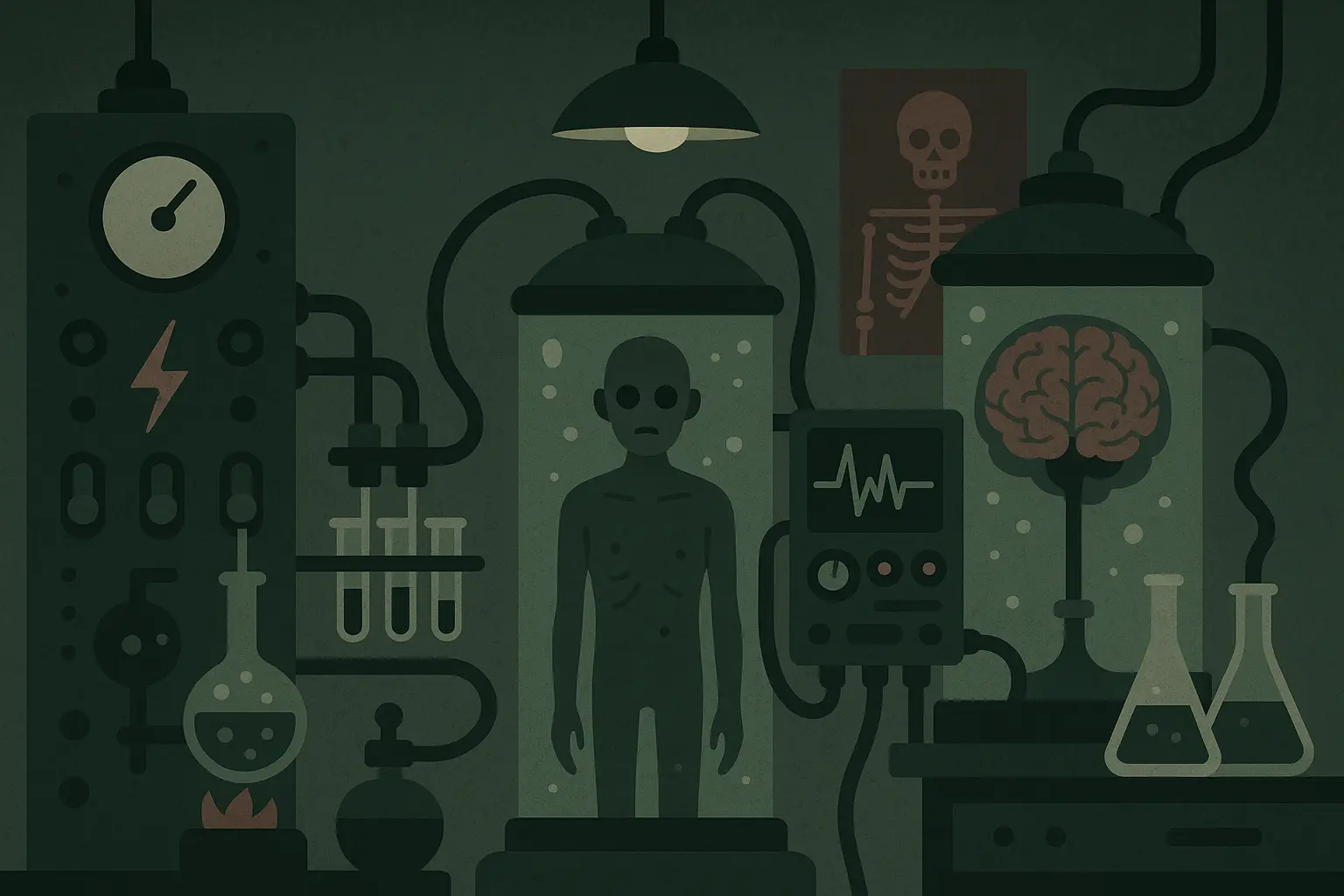
The gradual revelation of what happened – told through the scientist’s notes and his wife’s testimony – creates mounting dread as you piece together the full extent of the disaster. Langelaan demonstrates how scientific progress without proper safeguards can lead to consequences worse than death.
17. “Annihilation” by Jeff VanderMeer
VanderMeer’s ecological horror follows a biologist exploring Area X, where the environment itself seems to be transforming the expedition members. The story examines humanity’s relationship with nature and the possibility that we might encounter forms of life so alien that contact fundamentally changes us.
The horror comes from the gradual realization that the expedition members are being altered in ways they can’t understand or control. VanderMeer suggests that some aspects of nature might be so foreign to human experience that encountering them threatens our basic identity as a species.
Cosmic Horror That Makes You Feel Small
Existential and cosmic horror confronts you with humanity’s insignificance in an indifferent universe. These scary stories create profound psychological unease by suggesting that reality operates according to principles beyond human comprehension and that our existence might be fundamentally meaningless or threatened by forces we can’t even perceive.
18. “The Call of Cthulhu” by H.P. Lovecraft
I’ll be honest – some of Lovecraft’s writing hasn’t aged well, but his ideas still terrify me. This foundational cosmic horror introduces ancient entities that exist beyond human understanding, threatening both sanity and existence. The story suggests that humanity’s comfortable assumptions about reality are illusions, and that true knowledge of the universe would drive us insane.
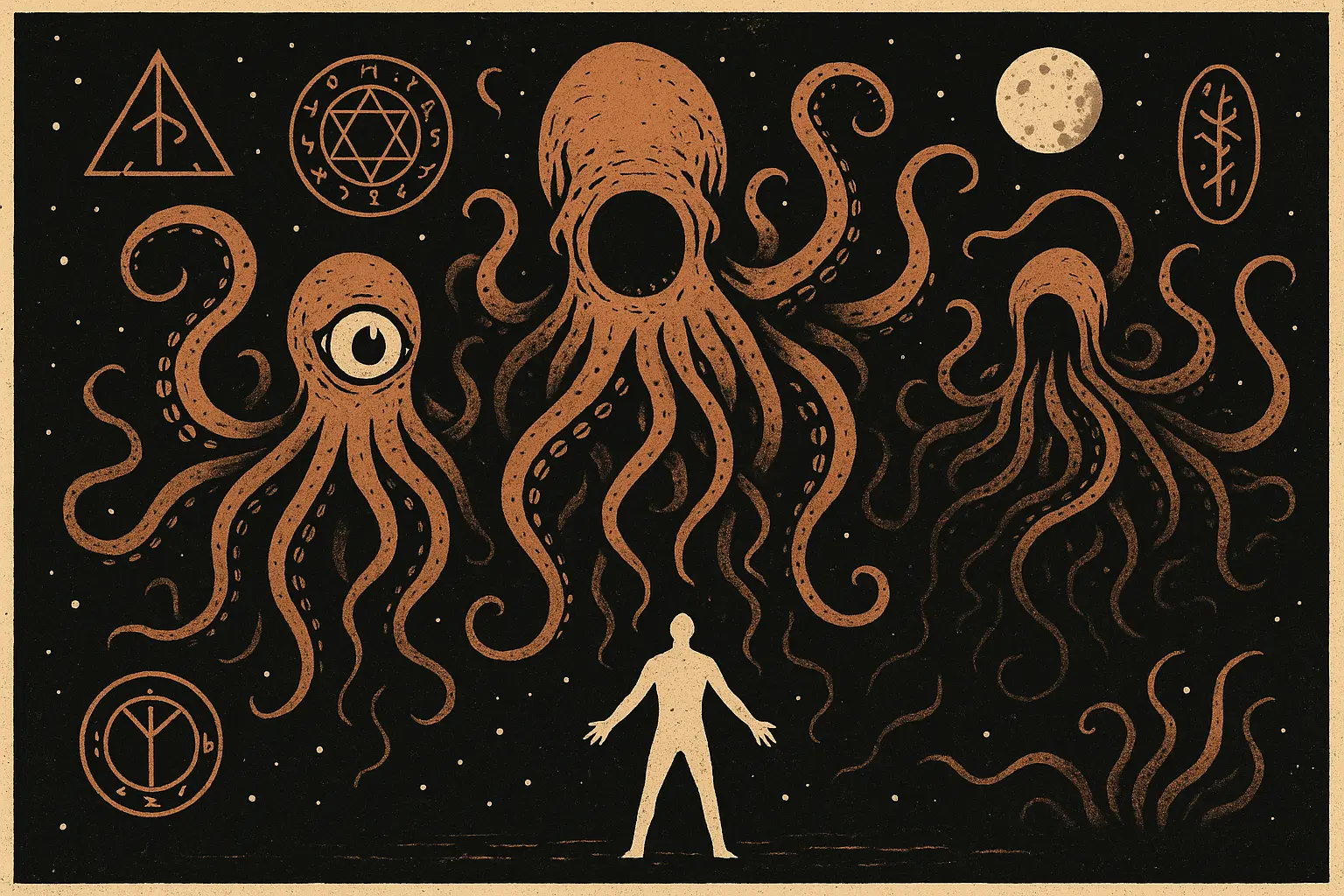
The horror emerges from implications rather than explicit descriptions – the idea that we live in a universe where beings of unimaginable power regard us as less than insects. Lovecraft creates dread through suggestion and atmosphere, letting your imagination fill in the terrifying details.
19. “I Have No Mouth, and I Must Scream” by Harlan Ellison
Ellison’s technological nightmare presents the last humans being tortured for eternity by a malevolent artificial intelligence called AM. The story examines consciousness, suffering, and the potential for technology to become humanity’s ultimate tormentor.
The existential horror comes from the characters’ complete helplessness and the AI’s infinite capacity for creative cruelty. Ellison explores what happens when consciousness becomes trapped in a situation where death would be mercy but remains impossible to achieve.
20. “The Road” by Cormac McCarthy
McCarthy’s post-apocalyptic journey follows a father and son traveling through a dead world where civilization has completely collapsed. The story explores love, survival, and whether maintaining humanity is possible in the face of ultimate despair.
The existential dread emerges from the complete absence of hope or meaning in the characters’ world. McCarthy forces you to confront what human relationships and moral behavior mean when stripped of all social context and future possibilities.
21. “The Last Question” by Isaac Asimov
Asimov’s philosophical science fiction follows humanity’s relationship with increasingly powerful computers across eons, all centered around the question: “How can entropy be reversed?” The story confronts the ultimate fate of the universe and humanity’s place within cosmic time scales.
The existential impact comes from the story’s vast temporal scope and its suggestion that even the most advanced civilizations must eventually face universal entropy. Asimov creates a sense of cosmic loneliness and the ultimate futility of all human achievement.
Modern Dark Stories for Current Fears
Contemporary dark fiction addresses current anxieties about technology, social media, climate change, political polarization, and cultural transformation. These stories blend traditional horror techniques with cutting-edge social commentary, creating narratives that feel immediately relevant while exploring how modern life generates new forms of psychological and existential terror.
22. “Her Body and Other Parties” by Carmen Maria Machado
Machado’s collection explores female experience through surreal, often horrifying scenarios that blend reality with nightmare. The stories address sexuality, violence, bodily autonomy, and the ways women’s experiences are dismissed or pathologized by society.
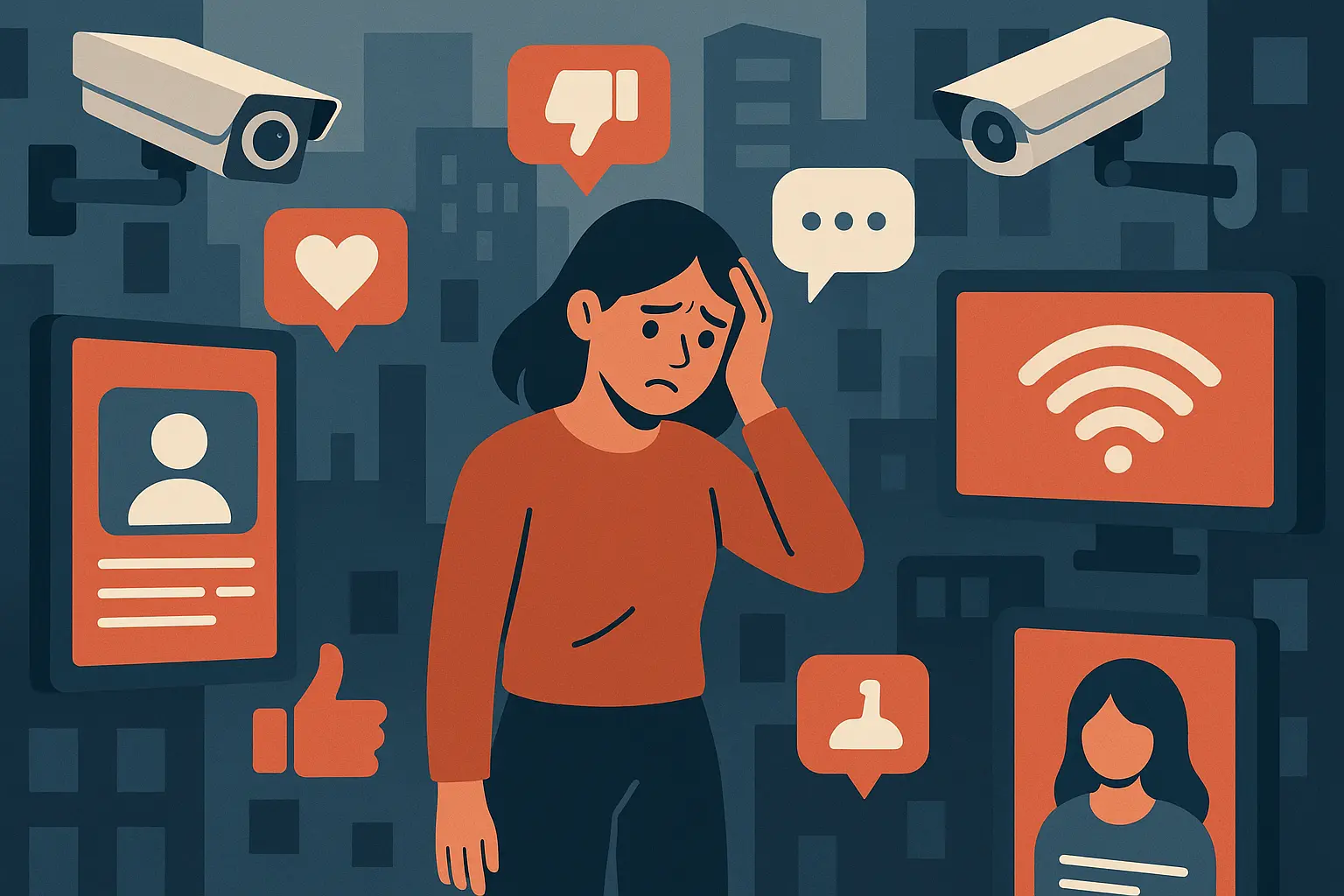
The horror emerges from recognizing that many of the “surreal” elements actually reflect women’s lived experiences. Machado uses genre techniques to make visible the everyday terrors that women face, transforming social realities into visceral horror narratives.
23. “The Only Good Indians” by Stephen Graham Jones
Jones creates contemporary horror that examines cultural identity, environmental destruction, and generational trauma through four Native American men haunted by consequences of a past hunting trip. The story blends traditional horror with Indigenous perspectives on nature and spirituality.
The narrative addresses how historical trauma continues affecting contemporary Native communities while exploring cultural preservation, environmental responsibility, and how past actions create ongoing consequences for future generations.
24. “Mexican Gothic” by Silvia Moreno-Garcia
Think “Get Out” but for colonial Mexico. Moreno-Garcia blends Gothic horror with themes of colonialism and eugenics in 1950s Mexico. A young woman investigates her cousin’s mysterious illness at a decaying English mansion, uncovering a family’s horrific experiments in racial purity and genetic manipulation.
The story uses traditional Gothic elements to examine how colonial attitudes and racist ideologies continue poisoning contemporary relationships. Moreno-Garcia demonstrates how historical injustices create ongoing horror for affected communities.
25. “Ring Shout” by P. Djèlí Clark
Clark creates alternate history horror where the film “Birth of a Nation” opened portals for monsters that feed on hatred and racism. A young woman fights both supernatural and human evil in a story that directly confronts America’s history of racial violence.
The narrative addresses how racism and historical trauma create ongoing supernatural and psychological horror for affected communities. Clark uses genre elements to make visible the continuing effects of historical injustices while celebrating resistance and survival.
How to Tell Good Dark Stories from Cheap Thrills
Here’s what I look for when I’m trying to figure out if a dark story is actually good or just trying too hard. You know a story worked when you find yourself thinking about it weeks later while doing dishes or lying awake at night.
What Makes the Really Good Stuff Stand Out
High-impact dark stories explore complex questions without easy answers. “The Lottery” achieves profound depth by examining how ordinary people perpetuate evil through tradition and social pressure. “Bloodchild” explores consent, power, and survival without providing simple moral judgments. “The Ones Who Walk Away from Omelas” presents philosophical thought experiments that challenge your ethical framework.
Moderate examples work effectively within more straightforward frameworks. “The Monkey’s Paw” warns about specific dangers while “The Tell-Tale Heart” masterfully portrays guilt and paranoia but focuses primarily on psychological horror rather than broader social commentary.
Here’s my rough scoring system:
Really Impacts You (8-10/10): Complex questions with multiple interpretations, masterful atmosphere with innovative techniques, lasting emotional effects that challenge assumptions, addresses current anxieties while exploring timeless concerns.
Pretty Good (5-7/10): Clear moral framework addressing specific social issues, solid storytelling with effective pacing, memorable scenes that create some discomfort, some contemporary elements with moderate relevance.
Meh (1-4/10): Simple good vs. evil with surface-level themes, basic plot structure with predictable elements, temporary scares with forgettable content, outdated references with limited applicability.
What Makes These Stories Work So Well
Exceptional craft appears in stories where every element serves multiple purposes. “The Turn of the Screw” demonstrates masterful use of unreliable narration and ambiguity. “We Have Always Lived in the Castle” showcases perfect atmospheric building and distinctive character voice. “The Yellow Wallpaper” employs innovative first-person narration that mirrors psychological deterioration.
When evaluating “The Lottery,” notice how Jackson builds tension through seemingly innocent details: children gathering stones, adults making nervous jokes, the lottery box’s deteriorating condition. Each element serves multiple purposes – advancing plot, building atmosphere, and reinforcing themes about tradition and social pressure. This layered approach separates masterful dark fiction from simple shock stories.
Why These Stories Get Under Your Skin
Maximum impact stories create lasting disturbing imagery and emotional responses. “I Have No Mouth, and I Must Scream” generates persistent unease about technological horror. “The Road” produces profound emotional responses about love and survival in hopeless circumstances. “Her Body and Other Parties” creates complex emotional responses about female experience and bodily autonomy.
The stories that really mess with you address immediate social concerns. “The Handmaid’s Tale” directly confronts reproductive rights and authoritarianism. “Ring Shout” addresses ongoing racism and historical trauma. “The Only Good Indians” examines environmental destruction and cultural identity loss.
Writers seeking to understand the structural elements that make stories memorable can explore short story examples that demonstrate masterful craft across multiple genres and styles.
Creating Your Own Dark Stories with AI Help
Look, creating compelling dark stories is harder than it looks. You need more than just disturbing imagery – you need masterful storytelling, psychological insight, and the ability to explore complex themes through narrative. If you’re struggling to get started with your own dark stories, AI tools can help you overcome creative blocks, master genre conventions, balance complexity with accessibility, and develop your unique voice.
Getting Past the Blank Page
Many writers feel intimidated when trying to create dark stories that achieve the same impact as the classics. That blank page staring back at you can be pretty intimidating. Nairrate’s story starters generator provides atmospheric opening lines specifically designed to launch dark narratives with immediate impact.
The AI understands how different types of dark stories require specific atmospheric elements from the very first sentence. Instead of staring at that blank page wondering how to begin, you can generate multiple opening options that immediately establish mood and direction for your narrative.
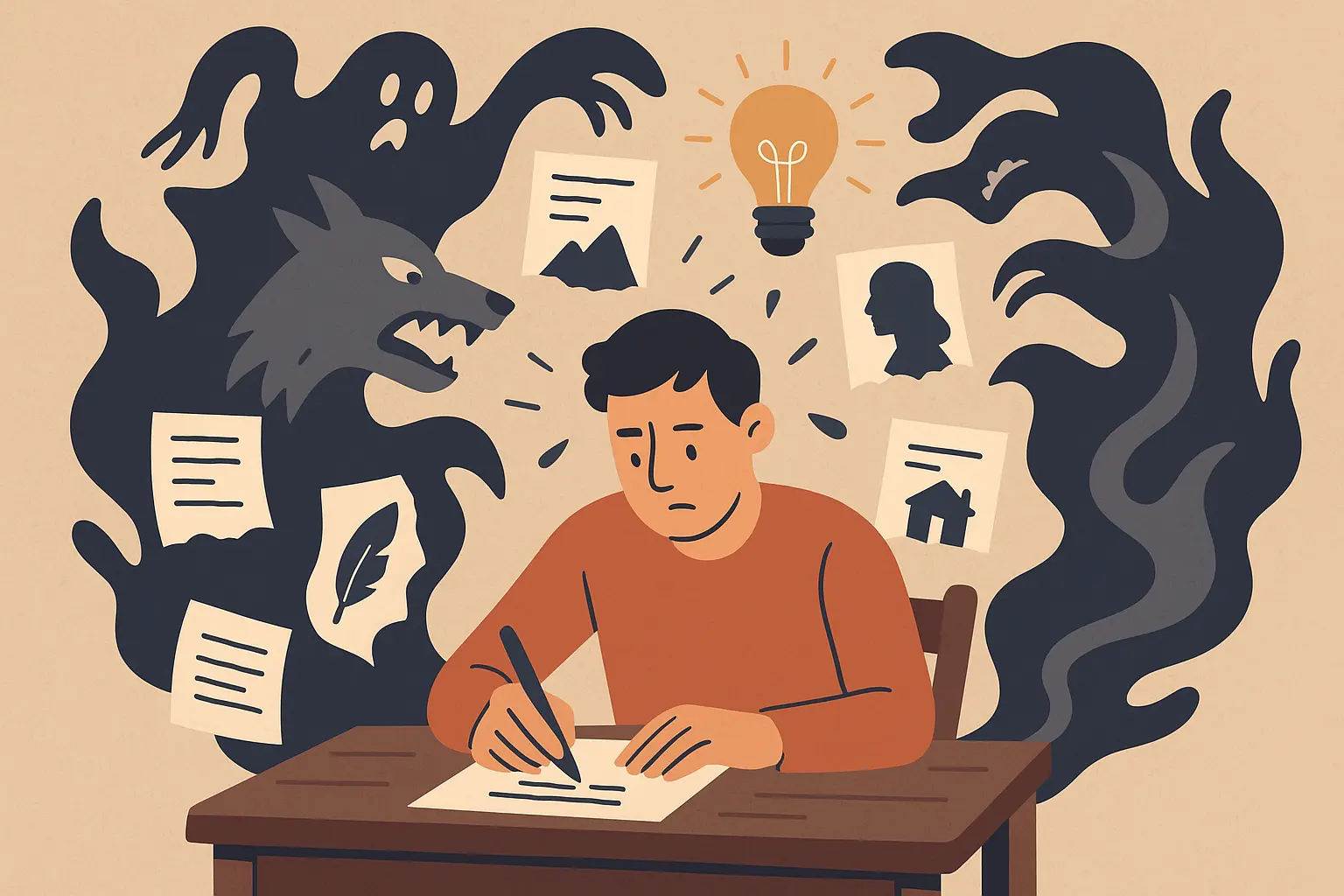
Understanding Different Types of Dark Stories
Dark stories span multiple subgenres – from Gothic horror to dystopian fiction to cosmic horror – each with distinct conventions and reader expectations. The AI comprehends these genre requirements and helps you generate atmospheric opening lines, develop appropriate character concepts, create plot structures that build tension effectively, and craft endings that deliver satisfying yet disturbing conclusions.
Writers can explore Nairrate’s specialized horror story generator to understand how different subgenres approach fear, atmosphere, and psychological impact through targeted prompts and suggestions.
Whether you’re working on psychological horror that requires unreliable narrators or body horror that demands visceral transformation scenes, the AI provides genre-appropriate suggestions that maintain authenticity while encouraging creative innovation.
Keeping It Complex But Readable
The most effective dark stories manage to explore complex themes while remaining accessible to readers. They tackle sophisticated philosophical questions without losing their audience through overly academic language or convoluted plotting.
The AI suggests approaches that maintain thematic depth while ensuring your story remains engaging and comprehensible . It can help you discover unique angles on familiar dark themes, providing creative challenges that push you to explore new narrative possibilities without alienating readers.
Finding Your Own Voice
While studying master works provides essential foundation, developing your own approach to dark storytelling sets your work apart. The AI functions as a collaborative partner, offering fresh perspectives and alternative approaches to specific challenges while you maintain creative control over your vision and thematic interests.
The AI can suggest different ways to handle ambiguous endings, help you find precise sensory details that create maximum psychological impact, or experiment with innovative narrative structures that serve your story’s unique needs.
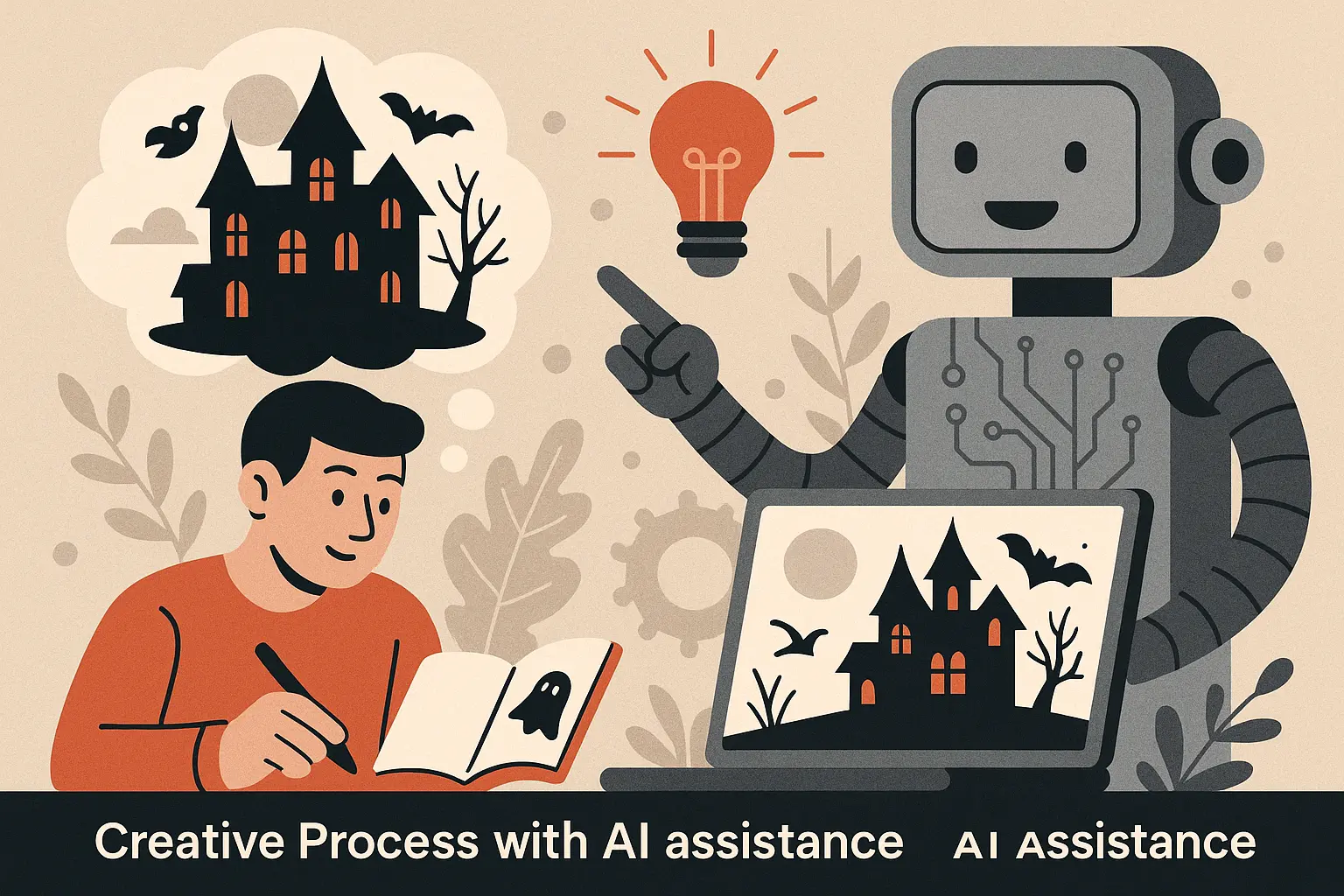
Final Thoughts
Dark stories work like mirrors, reflecting our deepest fears, societal anxieties, and the uncomfortable truths we’d rather avoid confronting directly. The 25 stories I’ve shared here prove that effective dark fiction requires way more than shock value or graphic content – it demands authentic exploration of human psychology, masterful storytelling techniques, and the courage to examine subjects that make readers genuinely uncomfortable.
The evolution from classic tales to contemporary works shows how dark fiction adapts to address each generation’s specific fears while maintaining timeless elements that speak to universal human concerns. Whether confronting cosmic indifference, technological horror, social decay, or personal psychological breakdown, the most memorable dark stories create lasting impact through careful craft rather than gratuitous content.
For aspiring writers ready to begin their own dark fiction journey, exploring the art of flash fiction can provide valuable insights into creating maximum psychological impact within minimal word counts.
Look, dark stories aren’t for everyone, and that’s okay. But if you’re like me and find something weirdly comforting about exploring the scary stuff through fiction, these stories are a good place to start. For writers seeking to create their own haunting narratives, remember that readers connect most deeply with stories that feel authentic rather than manufactured. The best dark fiction emerges from genuine anxieties and observations about human nature, society, and our place in an often indifferent universe.
Focus on building atmosphere, developing complex characters, and exploring themes that matter to you personally – the horror will follow naturally from honest examination of what truly frightens us about existence itself. Just maybe don’t read them right before bed.



Add comment